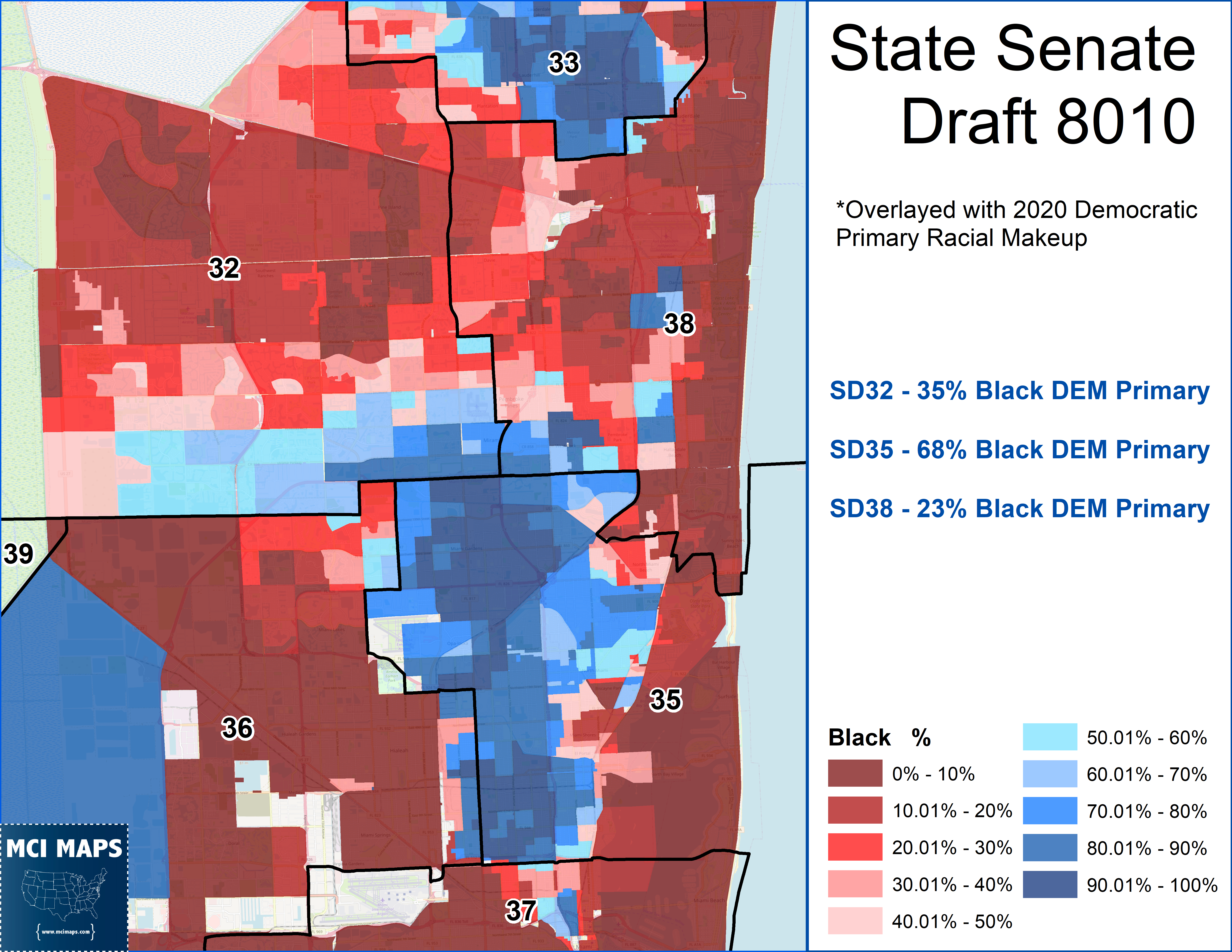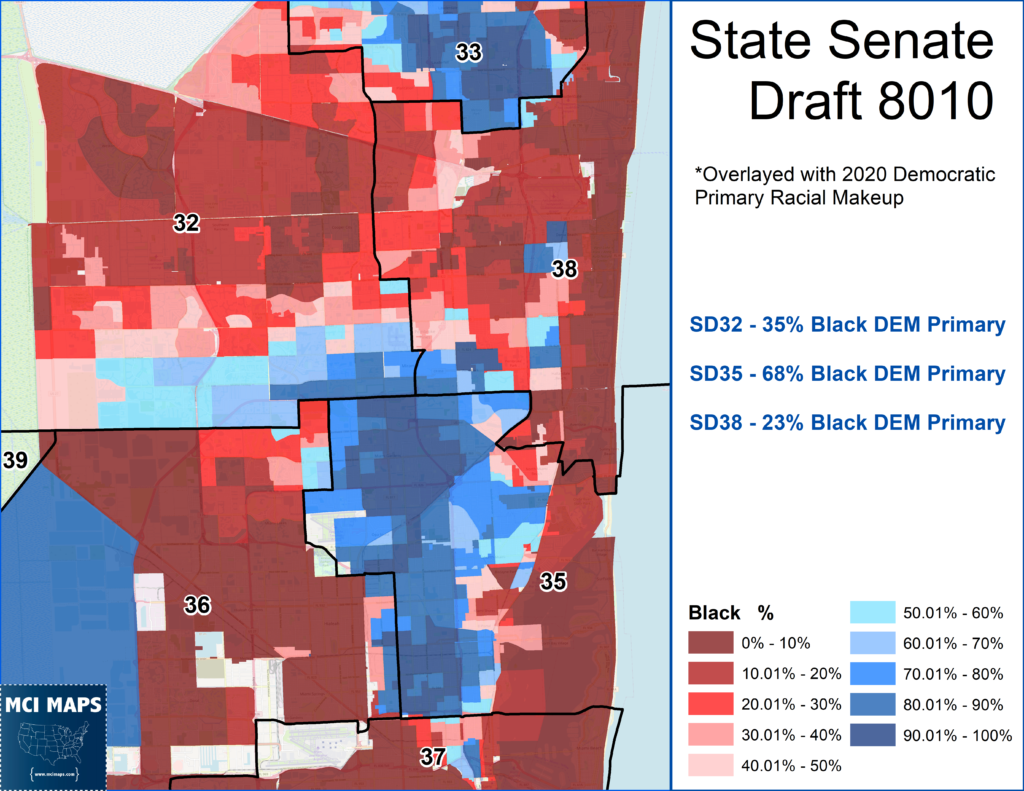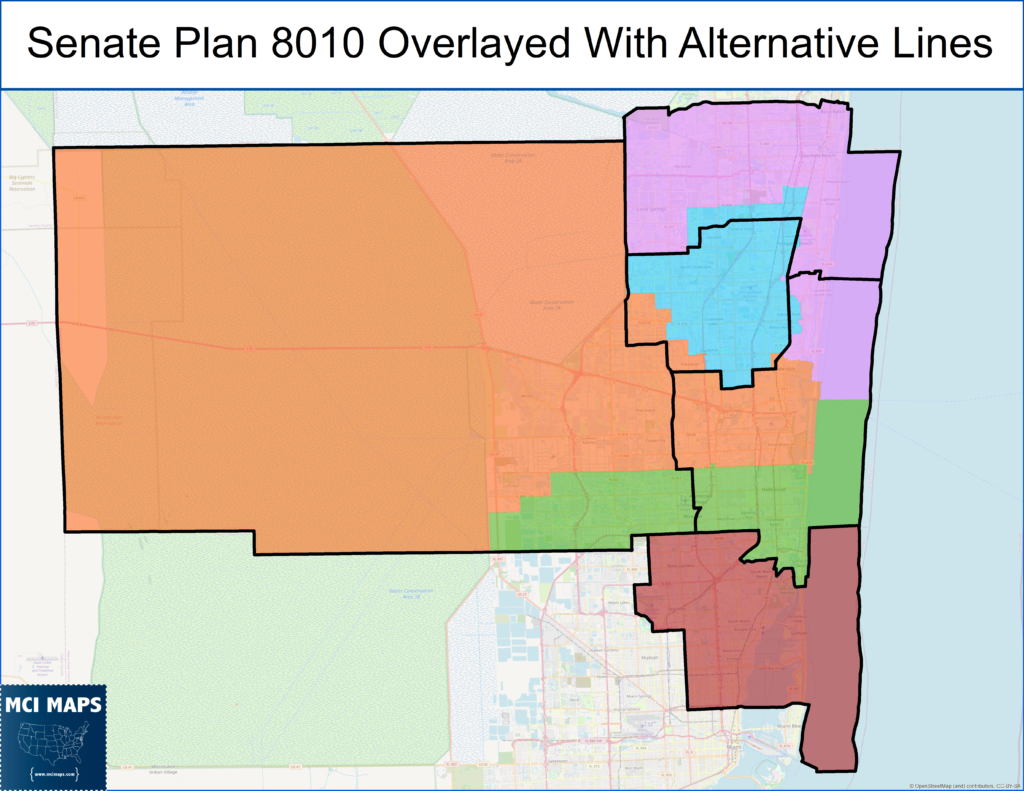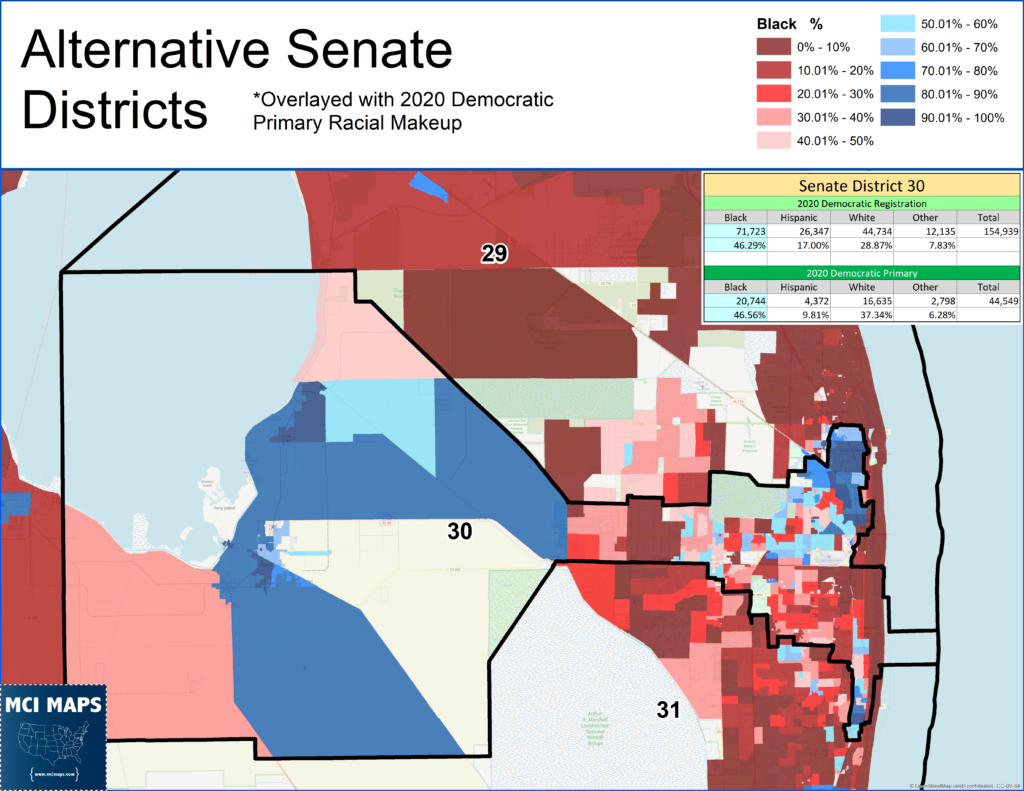This week marks article #6 in my series on redistricting possibilities across Florida. Each week I will look at an area of Florida and hypothesize how the maps may turn out.
Series Explainer
The goal of this series is to take a look at different areas in Florida and see how the legislative lines may end up. These articles will focus on how lawmakers may draw districts to accommodate changing populations. I will talk about different areas, what mandates (namely minority representation) they have, and what might need to happen due to population changes. I will also, at times, examine what efforts to gerrymander a region will look like. After the 2012 gerrymandering was discovered by a Florida Court, I believe it is appropriate to treat legislative intent with some healthy skepticism. “Fair maps” can – at times – be in the eye of the beholder, but the goal will be to identify what would likely be partisan decisions by lawmakers.
I highly recommending reading my History of Florida Redistricting series – as many mandates and norms we have in our maps are a product of that history. Prerequisite reading is absolutely my 2022 Primer Article – which covers which districts are under-populated and what the racial benchmarks are.
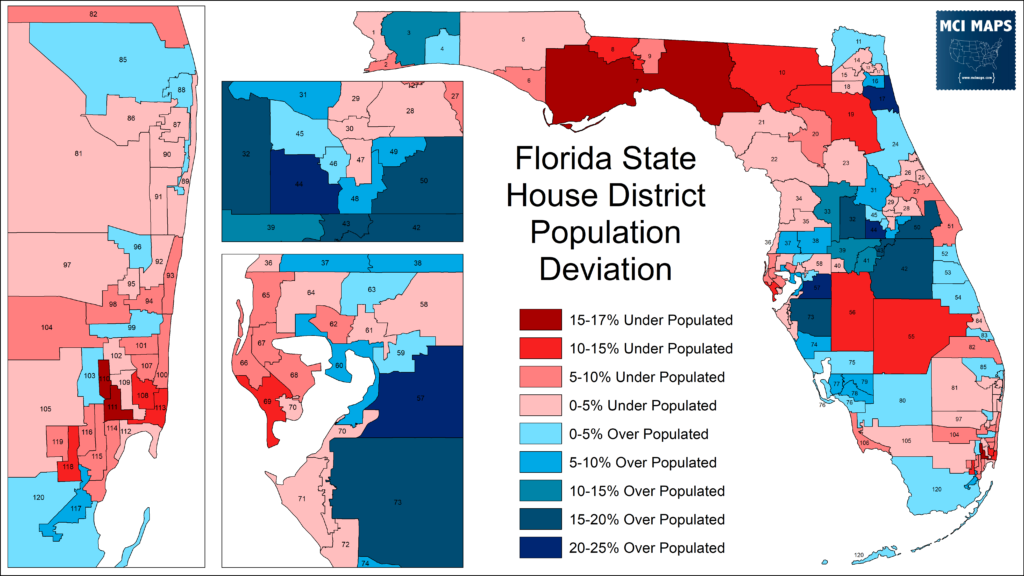

The full spreadsheet of district stats – including population and racial makeup – can be found here.
An important glossary to remember:
- BVAP = Black Voting-Age population
- HVAP = Hispanic Voting-Age Population
- Functional Analysis = using political turnout data to confirm minority performance in a district. Utilizing both general election and primary election performance for parties and racial groups.
Lets continue this series by looking at the southeast Florida state senate region!
Update! State Senate Maps Out
On November 10th, we got our first set of draft maps from the legislature. The Florida Senate’s Redistricting Committee released FOUR state senate maps. All four plans have similar makeups and only have a few differences.
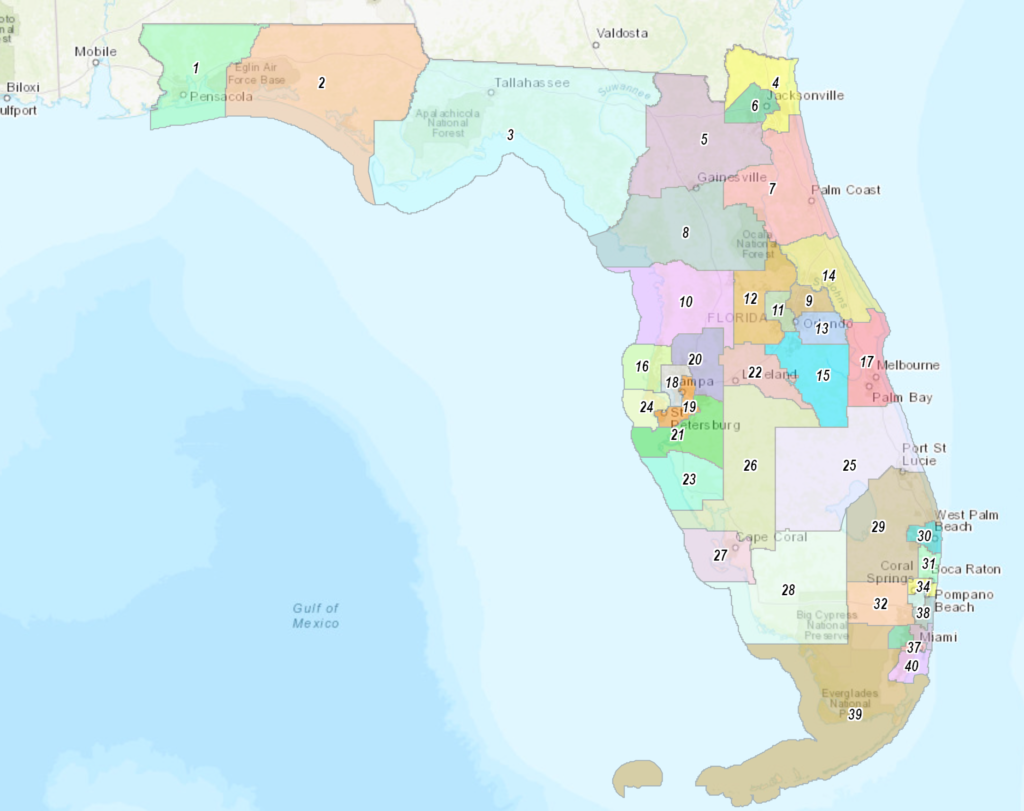
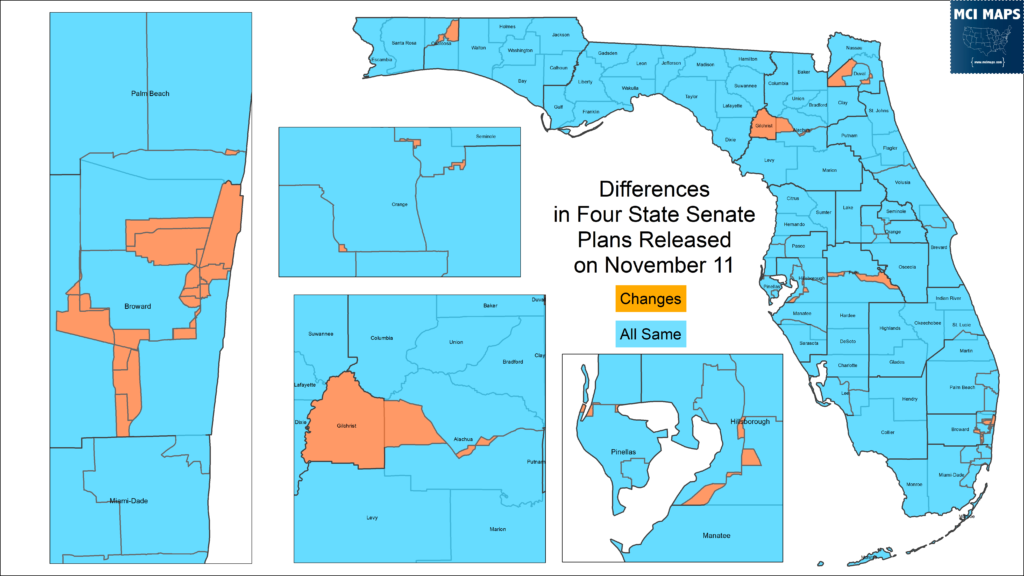
You can see all four plans here, and see my quick-look write-up in my latest substack article.
I recommend clicking those links for more details. Long story short, these are not terrible maps. They are not aggressive gerrymanders. I’d argue the State Senate map has some more “questionable” decisions than Congress, but the state senate plans still have a fairly balanced partisan impact. The plans are all 23 Trump Districts, 17 Biden districts.

For context, the current Senate plan is 22 Trump, 18 Biden.
As I said, there are some questionable decisions in the map. This article will talk about one of those issues – the southeast region!
The Southeast Florida State Senate Plan
Heading into redistricting, southeast Florida was going to be a loser in the process. All of the state Senate seats covering Palm, Broward, and Dade counties except for SD39 were underpopulated. SD38 was the 2nd most under-populated in the state; nearly 9% too low. All told, the three huge counties would lose a state senate seat. This created a tricky remap, as minority districts need to be maintain wherever possible. Heading into the remap, the districts could be broken down as….
- SD33 and 35 – Majority or near-majority black Districts
- SD36, 37, 39, 40 – Majority Hispanic districts
- SD38 – Black-access district via its Democratic primary
All four plans have the same layout for the four Hispanic-majority districts. Miami-Dade moved from three to four Hispanic districts in the 2015 remap.
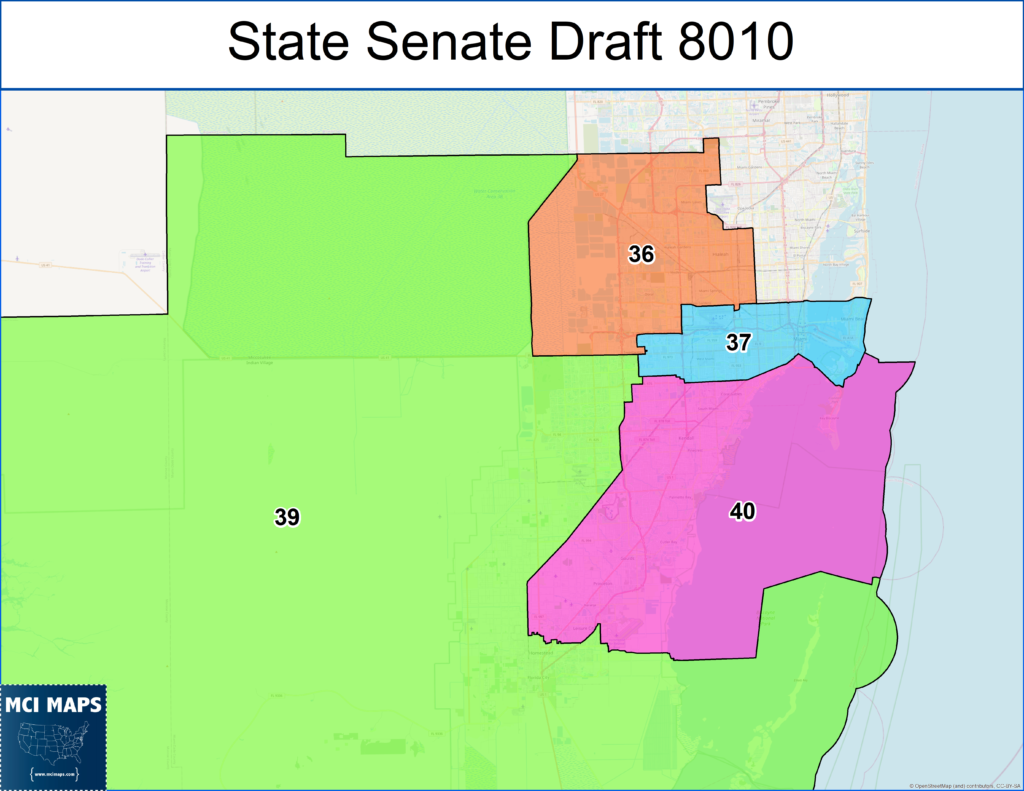
These districts all preserve the Hispanic voting strength of the preview map. SD39 continues to include all of Monroe County (Florida keys) and part of Miami-Dade; while SD36, 37, and 40 are all Miami-Dade only.
Possible Issue in the Broward and NE Dade Districts
The trouble begins as we move further north. The State Senate districts for Broward and Northeast Miami-Dade are below.
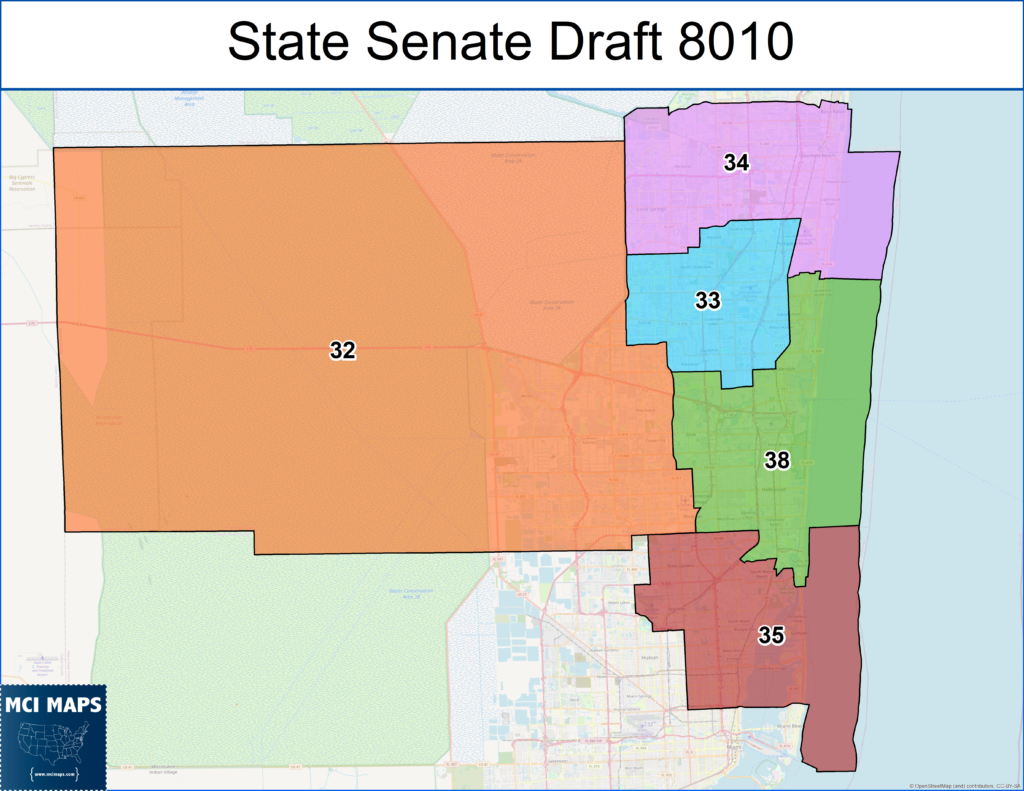
The different Senate plans have alternative borders for districts 32, 33, 34, and 38; but non of those differences effect the minority strength of the districts in a major way. All four have a potential issue. First, this is the Senate lines layed on top of the 2020 Democratic Primary racial makeup.
In the drafts, SD35 remains a solidly African-American district; 49% Black VAP and almost 70% black in the democratic primary. The district is also around 24% Caribbean (19% Haitian specifically). The current senate lines actually split the Haitian population. These drafts correct that issue and consolidate the Miami-Dade Haitian community under one district.
However, the lines north of SD35 cut the black community of south Broward right in half. This leaves two districts with black primary shares in the 20s to 30s; all lower than the benchmark of the current Senate districts.
For more context, below is the current lines for the northern Dade and southern Broward region.
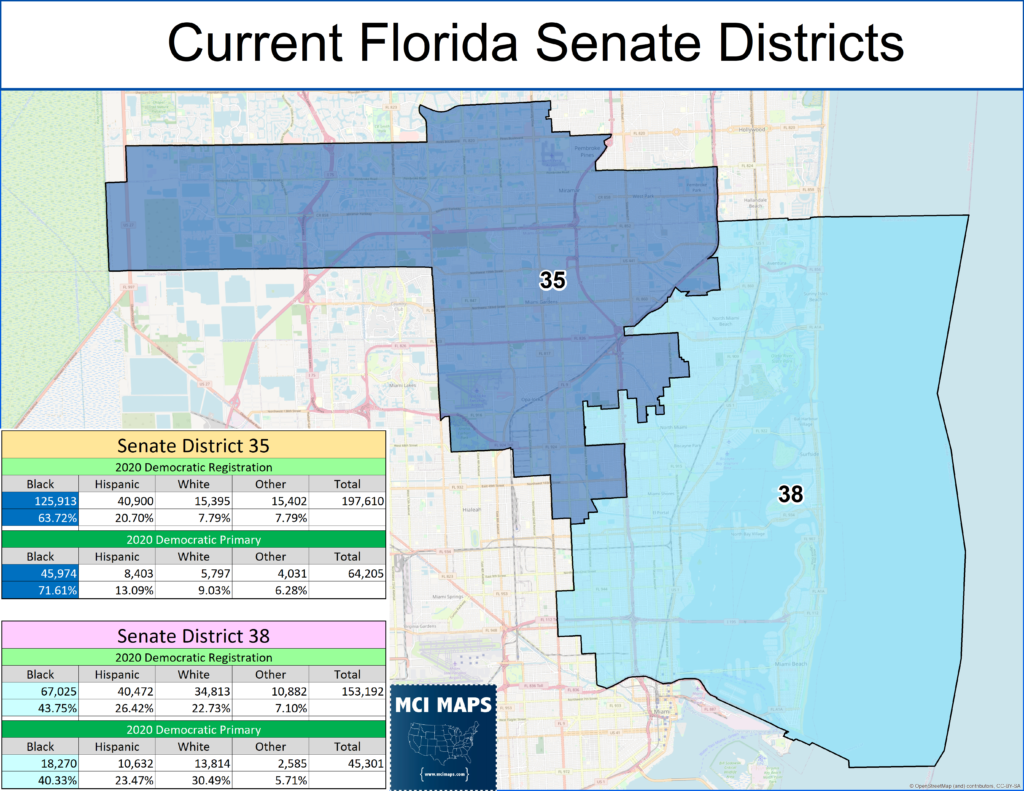
The current SD38 is a complicated districts; evenly divided between white, Hispanic, and black residents. However, its Democratic primary made the district an black-access seat. SD38 was going to have trouble being preserved due to its underpopulation, but this still leaves the issue of one less access seat on the board. The SD32 in the staff plans could potentially replace it. However, its also possible to see the split down the black community as a major error in the map that could trigger a future lawsuit.
To be clear, I am not entirely sure on how a court would view the situation with SD38. The district is NOT protected by the VRA, but could be protected by the Fair Districts Amendment rules on protecting minority districts currently in place. While SD38 is currently represented by a white Democrat, Jason Pizzo, the district does give African-Americans an opportunity to win the primary there.
So what is the best way to just take a lawsuit off the table (and also just NOT carve the black community of south Broward in half) – offer a new plan.
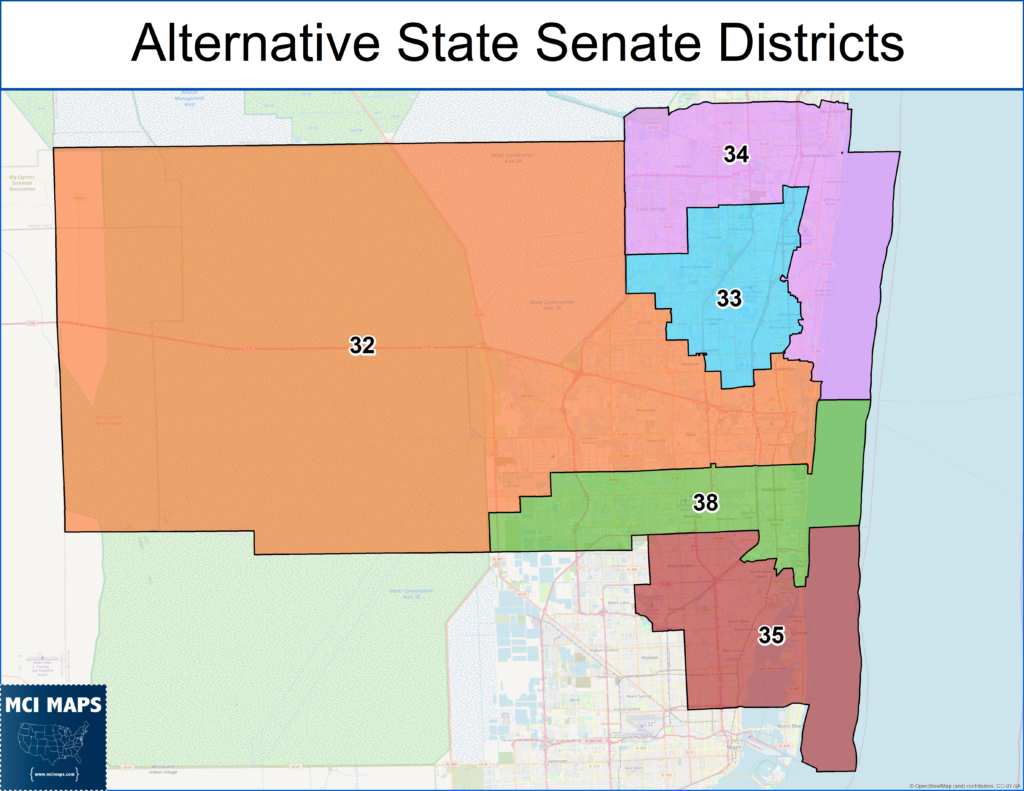
This alternative plan I drew up only makes changes to the Broward districts; making it a self-contained change that could be added to any plan. The district lines give SD38 a makeup similar to its current iteration.
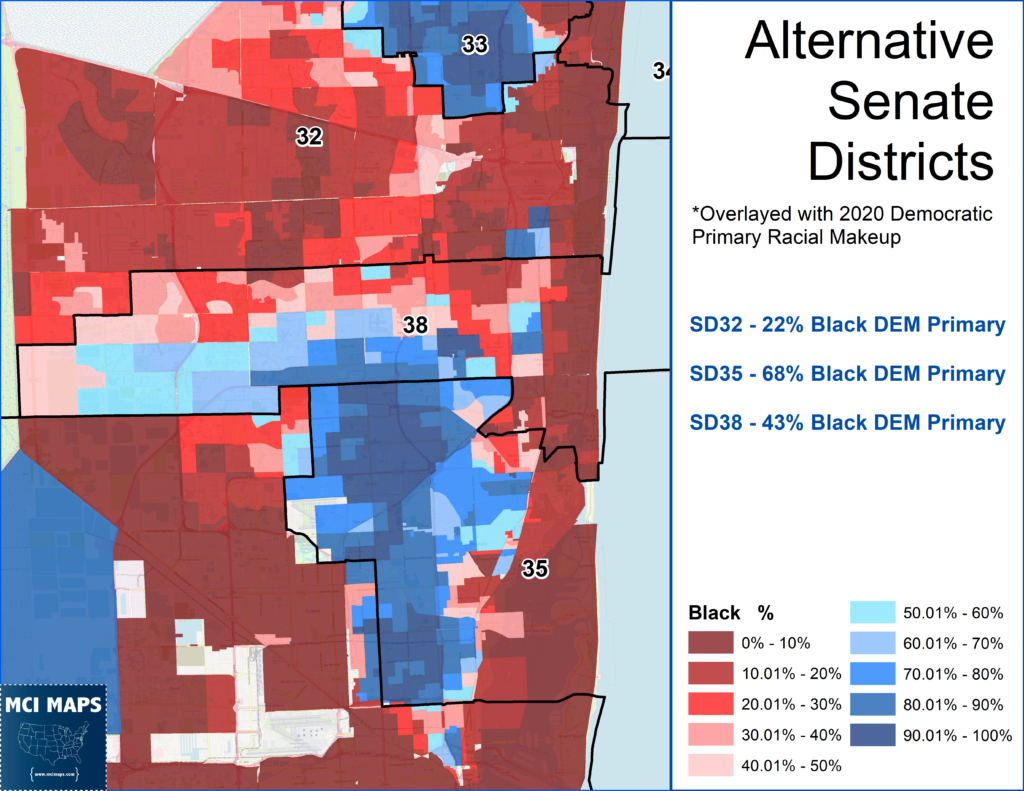
The new SD38 unites South Broward’s black and Hispanic populations. The district is 43% Hispanic, 27% white, and 26% black. It would be a safe Democratic district with a 43% black, 29% white, and 19% Hispanic democratic primary.
This plan allows for a continuation of a diverse SD38.
Another important note: SD33 is likely to end up with the largest Caribbean population in Florida. The drafts give it around 27% total; with 12% Haitian and 11% Jamaican. This means both SD35 and SD33 have the potential to elect Caribbean black Senators (especially as Caribbean voters can make up higher shares of primaries). Broward Commissioner Dale Holness, who almost won the FL-20 primary with his Jamaican base, would be a strong contender for this seat.
I delve more into the dynamics of Caribbean vs non-Caribbean black primaries here – as well as delve into on my coverage of the FL-20 primary here and here.
We will see if any alternative lines arise for Broward.
Lets move on to Palm Beach’s lines.
An Alternative in Palm Beach
As we move further North, we get the layout for the districts in Palm Beach. Districts 30 and 31 remain centered in the county, but SD29 is forced to move further north. SD29 is current partly in Palm and partly in Broward; but as seats get forced North, SD29 has been kicked out of Broward and now must move all the way into part of St Lucie.
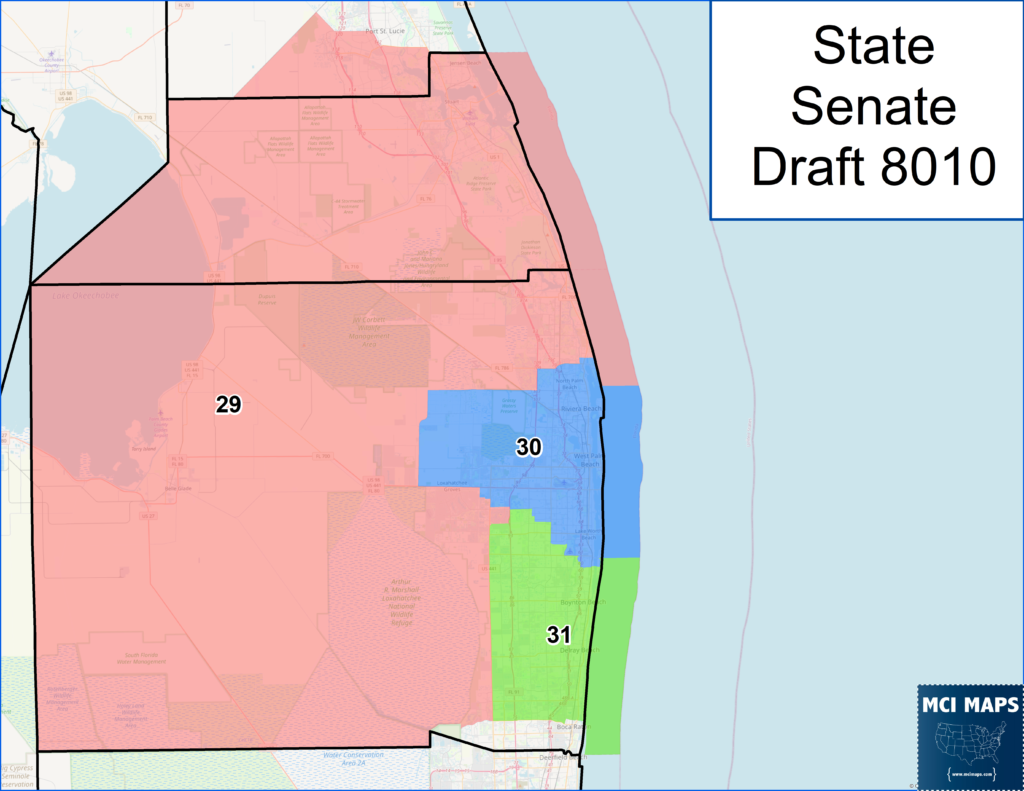
Overall these districts are perfectly fine; nothing stands out as a major flaw. There is, however, a potential improvement I think is worth considering. SD29 currently stretches all the way from southern St Lucie to the Broward border. It would make the district more compact is we moved 31 and 30 further west and has 29 take a bit more of North Palm Beach.
While making this change, SD30, which is a black-access seat under this plan; could be moved into the Glades community. For those who don’t know, the Glades is a largely Hispanic and Black series of towns that resides along Lake Okeechobee. My offered plan (below) links the Glades communities with the black voters in the urban core.

Take this step converts SD30 into a very likely African-American district; with a 46% black democratic primary.
This plan creates a functional black senate district in Palm while also adjusting SD29 to be more compact. I’d say a win-win.
Looking Ahead
The State Senate plans for Southeast Florida are overall solid plans. By far the biggest potential issue is in southern Broward; but otherwise all districts do well to balance Fair Districts with changing population demographics. We will see if any amendments or changes are pushed for the area.
Next article will look at possible state house districts in the region!

